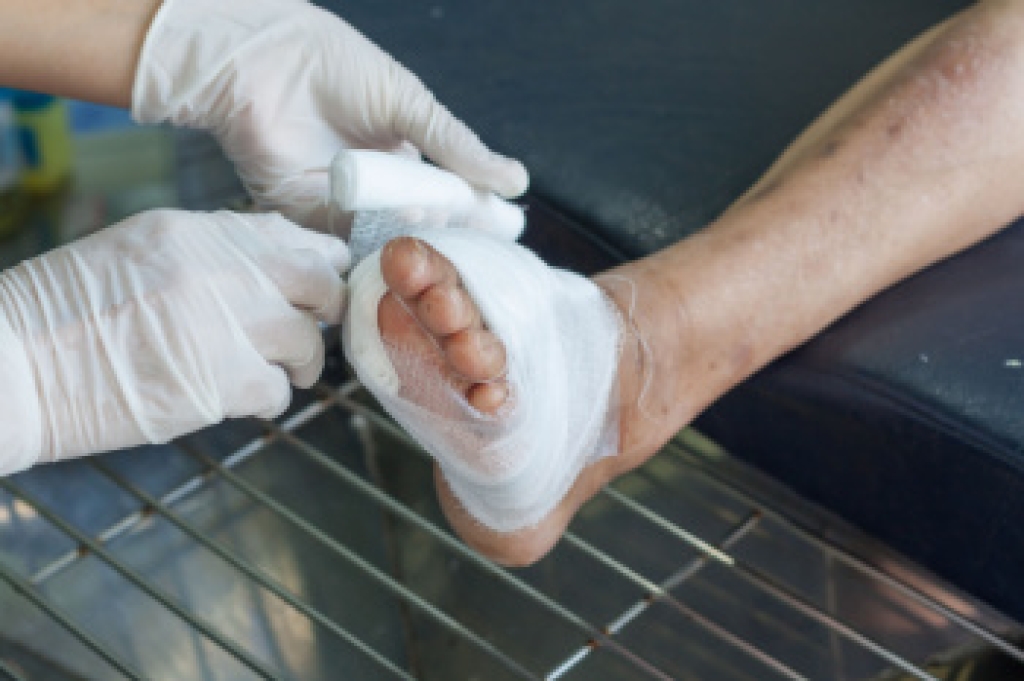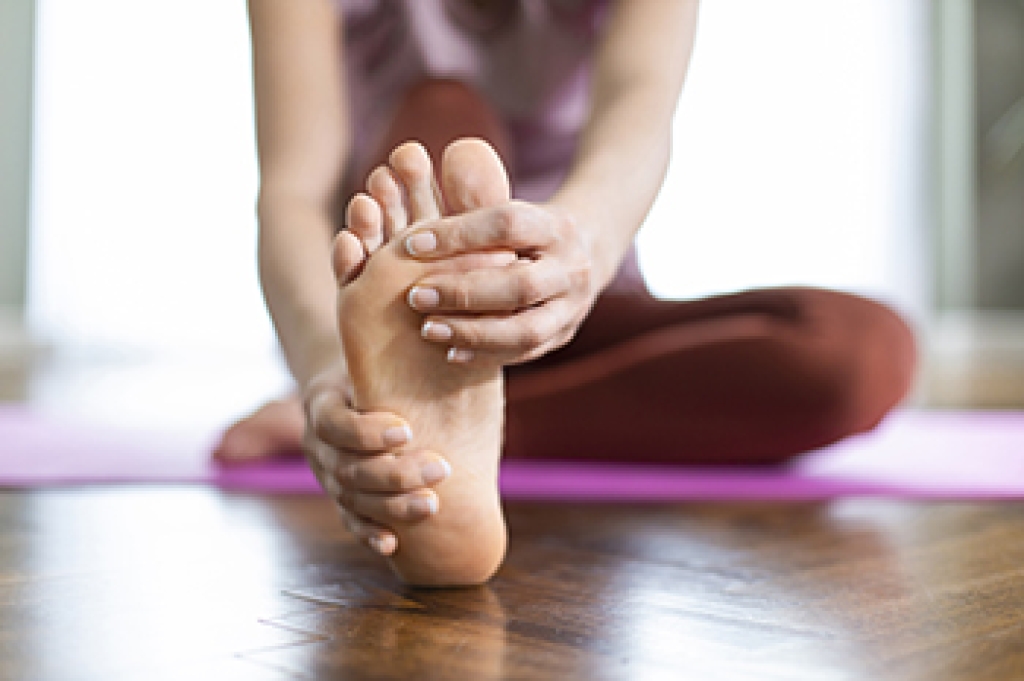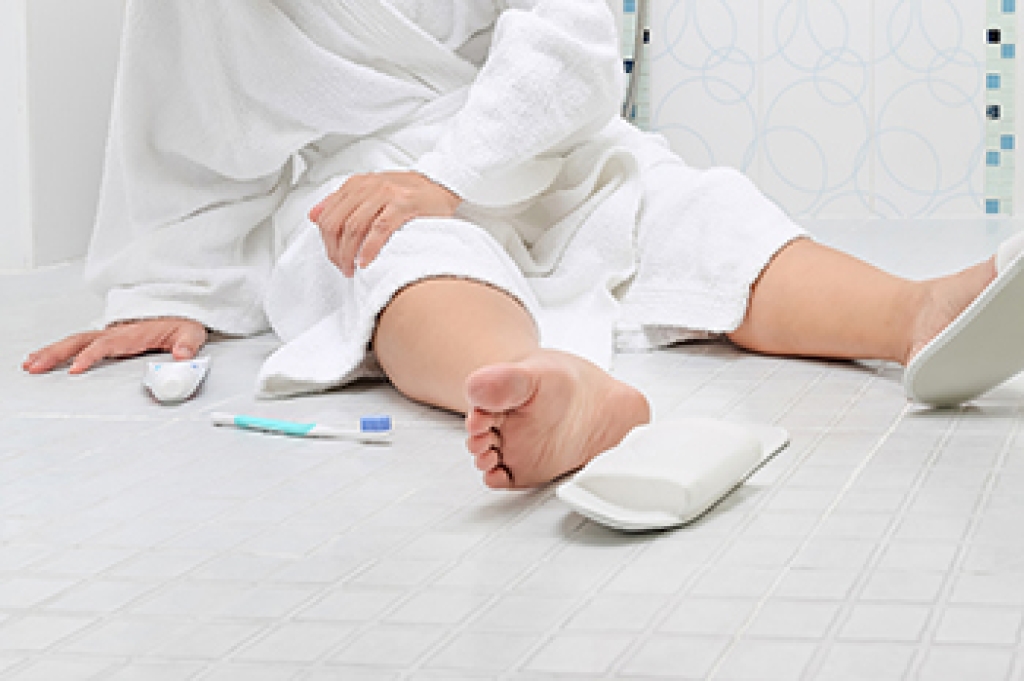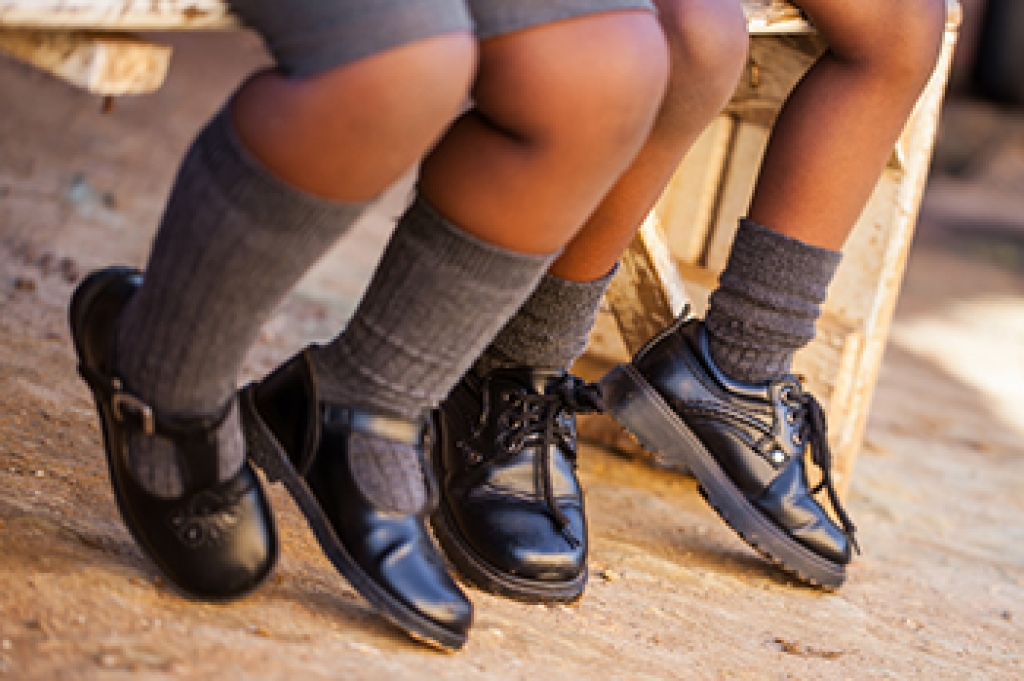Blog
How to Care for Diabetic Feet

Diabetes can significantly affect the feet due to poor blood circulation and nerve damage, known as diabetic neuropathy. High blood sugar levels can lead to decreased blood flow, making it harder for the body to heal wounds and fight infections. This can result in foot ulcers, infections, and even amputations if left untreated. Diabetic neuropathy can cause loss of feeling in the feet, making it difficult for individuals to detect injuries or sores. To care for diabetic feet, it is important to inspect them daily for cuts, blisters, or redness. Keeping the feet clean and dry, wearing comfortable shoes that fit well, and avoiding walking barefoot are important preventive measures. If you have diabetes, it is strongly suggested that you are under the care of a chiropodist who can help you manage this serious condition.
Diabetes can cause serious problems in the lower limbs if proper preventive measures are not taken and diabetic wound care is not performed. If you would like to learn more about caring for diabetic feet, please consult with one of the specialists from Thornhill Foot Clinic. Our chiropodists can help you maintain the health of your lower limbs and your mobility.
Diabetes can lead to a host of foot and ankle complications, including:
- Poor circulation
- Peripheral neuropathy
- Diabetic foot wounds and ulcers
- Infection
- Corns and calluses
- Dry, cracked skin
- Nail disorders
- Hammertoes
- Bunions
- Charcot foot
If you have diabetes, you must be vigilant of any changes in your foot health. This is best done through daily foot inspections. Using a mirror to help you if necessary, look for any:
- Cuts, scrapes, sores, or wounds
- Bruising or discoloration
- Swelling
- Rash
- Foul odor
- Nail changes
- Hair loss
- Warmth and inflammation
- Deformities
- Lower limb pain
- Strange sensations (numbness, tingling, burning, pins, and needles)
If you have any questions please feel free to contact our office located in Vaughan, ON .
Possible Causes of Toe Pain

Toe pain can stem from various underlying conditions and disrupt daily activities. Identifying the cause is essential for effective treatment and lasting relief. Osteoarthritis, often called wear-and-tear arthritis, breaks down the cartilage in toe joints, leading to stiffness, swelling, and aching. This condition is common in older adults or those with repetitive stress on their feet. Gout, a form of inflammatory arthritis causes sudden, intense pain in the big toe. It occurs when uric acid crystals build up in the joint, triggered by diet, dehydration, or genetic factors. Sesamoiditis, an inflammation of the small bones under the big toe, results from repetitive pressure usually affecting dancers and athletes. It feels like a deep ache, worsening with movement. If you are experiencing toe pain, it is strongly suggested that you see a chiropodist for a proper diagnosis and appropriate treatment solutions.
Toe pain is common and can have a variety of causes. Causes can range from a broken toe to an ingrown toenail. Many types of toe pain can be corrected, but any toe pain that inhibits your activities for an extended period should be discussed with a chiropodist. If you suffer from toe pain, please consult with one of the specialists from Thornhill Foot Clinic. Our chiropodists can help you maintain the health of your feet.
Common Causes of Toe Pain
- Trauma or fracture
- Cuts, sores, or bruises
- Rheumatoid arthritis
- Gout
- Turf Toe
- Morton’s neuroma
- Blisters
- Corns
- Bunions
- Hammertoes
- Ingrown toenails
- Plantar warts
- Athlete’s Foot
Symptoms of Toe Pain
- Toe deformity
- Burning
- Numbness
- Toenail deformity
- Wart or ulcer
- Swelling
- Redness
When to See a Chiropodist
- Bleeding or severe swelling
- Trauma, such as a broken bone
- Discoloration or extreme swelling
- Inability to bear weight
- Persistent pain
- Wounds that won’t heal
Diagnosis of Toe Pain
A chiropodist can conduct a thorough examination of the painful toe or toes in order to determine the best course of treatment. The exam may include assessing the tenderness of the area, taking an X-ray or other diagnostic test, or assessing your gait and range of motion. A discussion of what led to the advanced pain issue may follow. Included will likely be a health history, as well as a list of medications you are taking and other previous injuries you may have sustained.
Treatment for Toe Pain
With such a wide range of possible causes for toe pain, treatment can be varied in scope and length. Sometimes, the chiropodist will recommend lifestyle and activity changes. In cases of trauma or other injuries, X-rays or imaging tests will likely be used to determine the severity of the problem, particularly if any bones have been broken. Treatment may also include injections of pain-relief medication or anti-inflammatory drugs. Certain injuries will require the splinting, bracing, or wrapping of injured toes. Orthotics or special shoes may be prescribed in cases of bone deformities and gait issues. Removal of warts, calluses, and corns may be needed. In other cases, such as with patients who have diabetes or rheumatoid arthritis, ongoing treatment may be required to avoid more serious problems.
If you have any questions please feel free to contact our office located in Vaughan, ON .
Why Seniors Fall and How to Protect the Feet

Seniors often experience falls due to a combination of age-related factors. Reduced muscle strength, impaired balance, and slower reflexes can make it difficult to prevent or recover from a fall. Health conditions such as arthritis, neuropathy, or vision impairment can increase the risk of tripping or losing balance. Foot problems, including bunions or deformities, can contribute to instability, while wearing improper footwear may lead to slips. To protect the feet and reduce the risk of falls, seniors should wear shoes that provide proper support and cushioning. Foot care, including regular checks for sores, calluses, or changes in skin appearance, is essential. Strengthening exercises, balance training, and maintaining a safe home environment can also significantly reduce the likelihood of falls and help seniors maintain mobility and independence. If you have sustained a foot injury from falling, it is suggested that you consult a chiropodist who can offer effective treatment solutions.
Falls are a major cause of injury among the elderly. To learn more about preventing falls or to get treatment following a foot or ankle injury caused by a fall, please consult with one of the specialists from Thornhill Foot Clinic. Our chiropodists will assess your condition and provide you with quality foot and ankle treatment.
Falling is one of the leading causes of injury among the elderly. It is said that about 50% of falls that result in hospitalization occur in the home. Fortunately, there are steps that you can implement to reduce your risk of falling in the home.
Tips to Prevent Falls at Home:
- In the bathroom - Place non-slip mats in the shower or tub, install grab bars near the toilet and bath, and wipe up any moisture or spills as soon as possible.
- In the living rooms and bedroom - Remove loose wires, cords, or other objects that may be an obstacle to moving around safely. Make sure that you have good lighting throughout the home so that you can always see where you are going. Get rid of any rugs or mats that are not firmly anchored or that may cause you to trip. When walking around the home, move slowly.
- In the kitchen - Store food and supplies in easily accessible areas, store heavy items in lower cupboards, and wipe up any spills immediately to prevent slipping.
- On the stairs - Make sure that the stairs are well-lit and have secure handrails. Walk slowly when ascending or descending the stairs.
- Outside - Keep walkways well-lit and clear of snow, ice, leaves, and man-made tripping hazards.
Maintaining your overall health, including the health of your feet, can also help to prevent falls. Eat a healthy diet, exercise regularly, and wear well-fitted, comfortable, and supportive shoes. If you have a mobility device, such as a cane, use it while walking.
If you have any questions please feel free to contact our office located in Vaughan, ON .
Your Child’s Weight Can Affect Their Feet

A child’s weight can have a major impact on their foot health. Extra weight means more pressure on the feet, which can make movement and balance harder. Obese children often experience similar sensitivity across their entire foot, which limits the natural feedback their feet would normally send to help them stay stable. With added pressure, the foot can struggle to properly support their body. This increases the risk of discomfort, pain, and conditions like flat feet or fallen arches. Children with these issues also might be more prone to foot injuries, especially during activities that involve a lot of standing or movement. A chiropodist can help manage these concerns by assessing your child’s foot health. More supportive footwear, specific exercises, or custom orthotics are among the treatments available to ease foot pressure and improve comfort. If your child is experiencing foot pain that may be related to their weight, it is suggested that you schedule an appointment with a chiropodist.
If your child is experiencing foot or ankle pain, please consult with one of the specialists from Thornhill Foot Clinic. Our chiropodists will assess your condition and provide you with quality foot and ankle treatment.
Common Causes of Foot Pain in Children
While children can experience many of the same foot problems as adults do, some foot problems may be more common during childhood.
Causes of foot pain in children can include:
- Deformities that are present from birth, such as flat feet or clubfoot
- Sever’s disease, which is an inflammation of the growth plate in the heel bone
- Various sports injuries, such as sprains and fractures
- Ingrown toenails
- Athlete’s foot
- Plantar warts
Prevention
It is important to look after the health of children’s feet in order to prevent future problems from arising. Keep your child’s feet clean and dry, trim their toenails regularly, ensure their shoes fit properly, and keep a watchful eye on any symptoms of foot pain, such as limping. If you notice any symptoms or if your child complains of foot pain, a chiropodist can help.
If you have any questions please feel free to contact our office located in Vaughan, ON .

